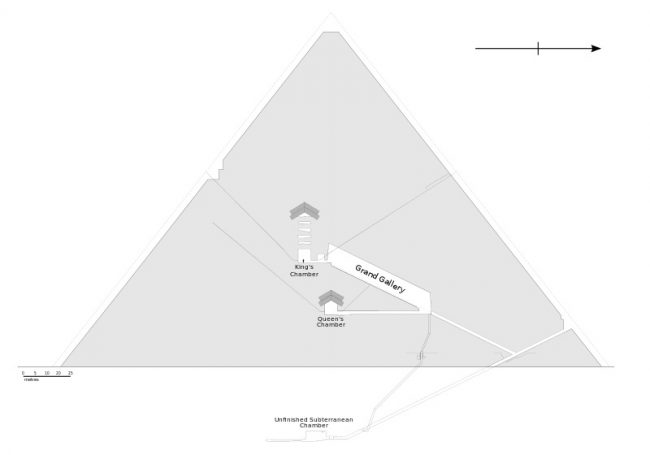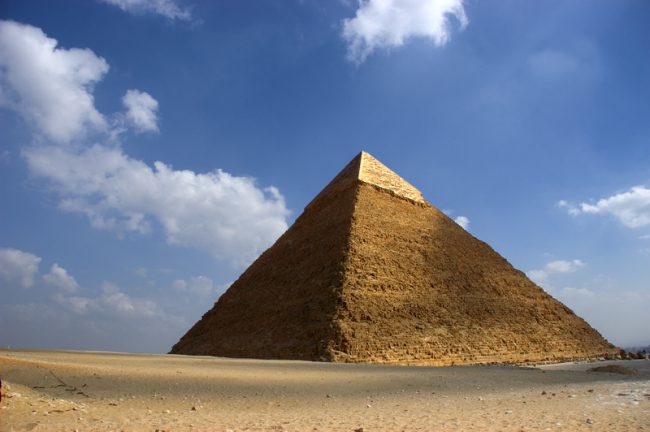Brand new scans of one of Egypt's most famous structures—The Great Pyramid of Giza—may point to undiscovered rooms hidden inside.
The Great Pyramid of Giza is the last remaining "Wonder of the Ancient World". These were seven incredible structures that were known as the most fantastic on Earth. The other six have all collapsed into ruins. But the 4,500 year-old Great Pyramid is remarkably intact (now you know what architects mean when they say that triangles are one of the strongest shapes!).
The tomb of Khufu
Also known as The Pyramid of Khufu, the pyramid was built as a tomb for the Pharaoh Khufu (also known as Cheops in Greek). Egyptian pharaohs often had large burial chambers built for them to move into the afterlife, but none of them were as massive as Khufu's. The Great Pyramid was originally 146.5 metres (481 feet) high, and was the tallest human-made structure in the world for almost 4,000 years. Still, for all of its massive size on the outside... the inside was rather small.
There are currently only three known chambers inside the pyramid. They are:

- The Grand Gallery, a long hallway with a high ceiling
- The Queen's Chamber
- The King's Chamber, where Khufu's mummy was placed
The rest of the pyramid was thought to be solid. Now these new scans point to the possibility of two new chambers inside. And how were they "discovered"?
Meet the muons
Hold on tight, because this is kind of mindblowing. To search for secret rooms in the pyramid, scientists used a muography. This is kind of like a cosmic X-ray. Muons are subatomic particles (aka invisible and super, super small) that rain down on Earth by travelling on cosmic rays. They are so small and fast that they can pass through anything... even solid rock. Eventually, stone will absorb them fully, but they must travel through a few hundred metres of rock before they are fully stopped. This means that they are able to travel through the whole pyramid from top to bottom.
So scientists scanned the pyramids for muon activity. Wherever muons were steadily slowing down would clearly be packed rock. But if the muons began to speed up again in places... that could be an open space! Scientists discovered two such spaces. So that means two new chambers, right?
Not so phast, pharaohs
Well, wait a sec there. A muography can be a good tool, but this isn't conclusive. For one, if they exist, getting into these rooms would a real challenge since no obvious pathways or doors to them have been found. Secondly, it could simply not be true. Only last year, researchers were saying that they discovered the tomb of the famous Queen Nefertiti in a secret room in the tomb of Tutankahmen. Excited reports went out around the world... until it was all found out to be a mistake on the part of the researchers.
So as the saying goes: Don't count your chambers before they're actually entered by someone with a camera. Or something like that. All the same though, it's pretty fascinating to imagine what secrets could still be inside the Great Pyramid. What would you want to find inside a lost chamber?
 (© Wisconsinart | Dreamstime.com)
(© Wisconsinart | Dreamstime.com)










This is amazing! Can’t wait to quiz my Egyptologist/tour guide when I travel to Egypt and visit the Pyramids of Giza in January 2017.
That is so interesting when I traveled to Egypt I went in a pyramid 😎 😎 😎 😎
Amazing and belible